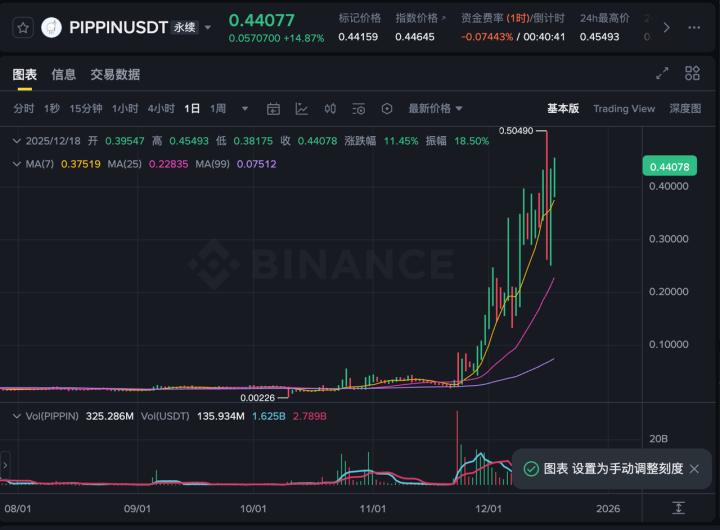
Web3 prediction markets are revolutionizing forecasting by leveraging the blockchain to aggregate information from diverse participants. These platforms embody the “wisdom of crowds” principle, creating efficient markets where participants place their beliefs as bets, with real skin in the game.
The growth of these platforms is staggering. Polymarket, a leading player, saw its trading volume soar to $360 million in July 2024 — a fiftyfold increase from its 2023 average. This surge is directly tied to the U.S. presidential election, with over 99% of bets focused on election-related outcomes. Yet, amid the political fervor, you’ll also find markets predicting the first cat memecoin to hit a $1 billion market cap or the next viral TikTok dance craze.

As these markets mature, there is immense potential for innovation and growth, raising the question: What will the next generation of prediction markets look like? Whether it’s through advancements in technology, improved user experiences, or the expansion into new sectors, the future of Web3 prediction markets holds the promise of refining and transforming the way we collectively forecast and respond to emerging trends.
Challenges Facing Web3 Prediction Markets
Liquidity and Market Making Challenges
Long-Tail Event Dilemmas
Imagine a prediction market for the discovery of a habitable exoplanet. Pricing such a rare event is a classic long-tail dilemma, where the uncertainty and speculative nature of the outcome lead to low liquidity. In prediction markets, niche events often struggle to attract participants, resulting in thin order books and limited trading activity. This lack of liquidity makes it difficult for traders to enter or exit positions, ultimately undermining the market’s effectiveness and leaving intriguing but less immediate predictions largely ignored.
Impermanent Loss for Liquidity Providers
Liquidity providers (LPs) — participants who supply assets to the market’s liquidity pools to facilitate trading — face significant risks due to impermanent loss. For example, consider a prediction market on a binary event, such as whether a particular candidate will win an election. As the event’s outcome becomes more certain, the price of the associated tokens will converge towards either zero or one. LPs who provided liquidity early on might end up holding a disproportionate amount of the losing token, which becomes nearly worthless, resulting in a substantial impermanent loss.
User Engagement and Market Appeal
Limited Upside Potential
In the crypto world, everyone is chasing the next 100x gain, which can make prediction markets seem relatively tame. For example, instead of betting on Donald Trump vs. Kamala Harris in a prediction market, many might prefer to invest in memecoins like $TREMP or $KAMA, which offer uncapped potential and higher excitement. To compete, prediction markets could incorporate gamification elements, such as dynamic event-specific markets or reward systems like loyalty programs or tiered rewards that enhance user engagement and make truth-seeking as thrilling as memecoin speculation.
Market Diversity and Longevity
Prediction markets need to diversify beyond political events to sustain long-term engagement. While sports and entertainment already have established niches, the opportunity lies in creating specialized markets that cater to specific interests, such as predicting when ChatGPT-5 will be released. However, a common criticism is that even within broader themes, users may only engage with specific topics, making these markets highly seasonal.
Additionally, the need for markets to run for extended durations, with uncertain outcomes, can deter participation. Many topics take a long time to conclude, and without clear criteria, they may struggle to attract ongoing interest. To address these challenges, prediction platforms should focus on quickly creating and concluding niche markets that align with user interests, balancing the need for engagement with the realities of market viability.

Regulatory Hurdles
Regulation remains a significant barrier to the growth of prediction markets. The CFTC’s $1.4 million fine on Polymarket in 2022 highlighted the risks of operating unregistered platforms. This regulatory action led to Polymarket barring U.S. users to comply with the settlement. However, the challenge is far from over, as recent developments have increased scrutiny on election-related prediction markets. More recently, in 2024, the CFTC proposed a rule to ban derivatives trading on U.S. elections, arguing that such markets could potentially influence outcomes.

This proposed ban has serious implications for platforms like Polymarket, PredictIt, and Kalshi, which rely heavily on political betting markets. Senator Elizabeth Warren has also been vocal in urging the CFTC to shut down election prediction markets entirely, citing concerns about their potential to disrupt democratic processes. These platforms are now engaged in legal battles to push back against these regulations.
The situation underscores the delicate balance prediction markets must maintain between innovation and compliance. As the regulatory landscape becomes more complex, platforms will need to adapt or face significant limitations on their operations, potentially stifling the growth and diversification of this emerging industry.
The Next Generation of Prediction Markets
Despite the numerous challenges facing prediction markets today, a new wave of innovation is on the horizon. The next generation of prediction markets is being designed specifically to address these obstacles, incorporating advanced technologies, enhanced market mechanisms, and user-centric features. These upcoming platforms aim to overcome the hurdles of liquidity, user engagement, and regulatory constraints, potentially transforming the prediction market landscape and paving the way for a more robust and dynamic future.
Advanced Market Mechanisms
Specialized Liquidity Solutions
Specialized market makers could unlock vast troves of collective knowledge by providing liquidity for esoteric outcomes. One example of innovation in this space is the approach taken by projects like Azuro, which employ a peer-to-pool liquidity model. This model pools capital to act as a single counterparty to platform traders, ensuring that even niche markets have sufficient liquidity to function effectively. Such a system supports a broader variety of prediction markets, making it easier to maintain liquidity in long-tail events.
This approach can be particularly useful for markets predicting rare or highly specific events, such as the impact of a niche technological breakthrough. By aggregating liquidity from a diverse group of participants, the model diversifies risk across multiple markets, reducing the potential for liquidity shortages and enhancing the overall robustness of the platform.

Leveraged and Parlay Betting
The ability to win more and in different ways is particularly attractive to prediction market participants, and this is where advanced betting strategies like leveraged and parlay betting come into play. Leveraged betting allows participants to raise their potential returns by increasing their stakes, which can be especially appealing in high-stakes markets like political predictions.

Parlay betting, which combines multiple predictions into one wager, offers an opportunity for even higher rewards. For instance, a user might place a parlay bet on several related economic events, such as changes in interest rates and inflation figures within a quarter. The interconnectedness of these events increases the potential payout, though it also comes with higher risk.
The social aspect of parlay betting adds another layer of excitement. Participants could share their parlay tickets on social media, creating viral moments when someone wins big. This could drive more engagement, especially within the crypto community. However, managing the risks associated with large simultaneous payouts and setting accurate odds remains a challenge.
The implementation of a peer-to-peer parlay betting system on SX Bet, a web3 sports betting platform, allows users to create customized bets with liquidity provided by automated market makers. This innovation sets the stage for more dynamic and engaging prediction markets across various sectors.

Permissionless Market Creation
User-generated markets have the potential to vastly expand the range of predictable events. By allowing anyone to create a market, platforms can tap into predictive power in unexpected domains. For example, niche audiences might create markets predicting the success of a specific meme or the outcome of a niche cultural event, which would otherwise be overlooked by larger platforms.
Swaye is pioneering this approach by enabling users to create markets tied to event outcomes, where participants can even create or trade memecoins linked to these outcomes. Users frustrated by high opportunity costs and the inability to create their markets on traditional platforms can turn to Swaye, where they can generate markets and earn fees. For instance, users might create a market on whether the monkeypox virus be declared a pandemic before a specific date. Outcome tokens, such as $MPOX and $NOPOX, would represent the possible results, with the losing token going to zero and the winning token potentially becoming a permanent memecoin.

Enhanced UX and Engagement
Mobile-First and Real-Time Predictions
Optimizing for mobile platforms is crucial for capturing real-time insights. Picture a mobile-first prediction market experience where users can interact and place bets during live events, such as sports games or political debates. Notifications and real-time updates could keep users engaged, allowing them to make predictions on the go and see results instantly.
Integrating with Social Networks
Tapping into existing social media channels is a powerful way to onboard more users and enhance engagement in prediction markets. By integrating with platforms like Farcaster and Solana’s Blink, prediction markets could leverage established networks for distribution and user interaction. Projects like Swaye and Bookie are already working towards this, enabling users to share their predictions directly on social feeds, creating viral moments and driving participation.

This integration could make prediction markets more accessible and appealing to a broader audience, as users can seamlessly join predictions shared within their social circles.
Gamification and Social Dynamics
Gamifying prediction markets can further enhance their appeal by transforming them from dry exercises into engaging contests. Features like leaderboards, achievement systems, and competitive leagues could significantly drive user engagement. Imagine users participating in a social prediction league, earning badges, and climbing the ranks based on their accuracy. Influencer-driven predictions could add another social layer, where well-known personalities share their bets, encouraging their followers to join in and compete, thus deepening community involvement and interaction.
AI Integration
AI is poised to revolutionize the landscape of prediction markets, potentially solving long-standing challenges and unlocking new possibilities. As Vitalik Buterin, co-founder of Ethereum, suggests, the intersection of AI and crypto, particularly in prediction markets, could be the “holy grail of epistemic technology.”
Content Creation and Event Selection
AI could significantly enhance the process of creating engaging events in prediction markets. By analyzing trends from news, social media, and financial data, AI may suggest timely and relevant topics that capture public interest. For instance, AI could identify emerging global issues, such as a sudden geopolitical conflict or a breakthrough in technology, and recommend these as prediction market topics, ensuring that the markets remain dynamic and aligned with current events.
Market Making and Liquidity
AI-powered liquidity management is an area of growing interest within prediction markets. While specific implementations are still emerging, AI could eventually play a key role in dynamically adjusting liquidity depth and pricing in real-time. By monitoring market activity and sentiment, AI might optimize liquidity provision, reducing slippage and enhancing market stability. This approach could be particularly valuable in volatile markets where liquidity needs fluctuate rapidly.
Information Aggregation and Analysis
AI systems might soon process vast amounts of data, offering comprehensive projections that could turn prediction markets into go-to sources for informed decision-making. By aggregating data from various sources, such as economic indicators, public sentiment, and historical trends, AI could provide highly accurate forecasts, making prediction markets more reliable and insightful.
For example, Polymarket’s recent integration with Perplexity will allow the aggregation of search engine and social media sentiment to users to create news summaries, along with visual data, so users can make more informed decisions.
AI as Market Participants
AI’s role as an active participant in prediction markets is set to expand significantly. Platforms like OmenETH are already demonstrating how AI bots can trade alongside humans, enhancing market depth and improving forecast accuracy. These AI bots are particularly effective in identifying and exploiting price discrepancies, helping to maintain price consistency and efficiency across markets.

AI’s potential goes beyond just trading. By enabling participation in niche and long-tail markets — such as predicting the outcome of a specific scientific breakthrough or the impact of a new regulation on a niche industry — AI could make these previously low-liquidity markets more viable. AI systems, with their ability to process vast amounts of data and react swiftly to new information, can ensure these specialized markets remain active and attractive to participants. One project that is working on allowing the building of these AI agents is Autonolas.
Moreover, AI could revolutionize dispute resolution within prediction markets. AI-driven systems, could provide impartial and efficient judgments in contested outcomes, such as close elections, reducing the time and costs associated with traditional human arbitration.
ZK to Make Predictions Private
In prediction markets, privacy isn’t just about keeping bets secret; it’s essential for ensuring the market functions correctly. If everyone could see each other’s predictions, there’s a risk of copying the most successful forecasters, which could undermine the diversity of opinions that make these markets valuable.
To address this, platforms can use privacy-preserving technologies that keep predictions confidential until the event is resolved. For example, a method called “commit-reveal” allows participants to submit predictions in a way that keeps them hidden until it’s time to reveal the outcomes. This process is like sealing your prediction in an envelope that only the blockchain can open at the right time.
Platforms may also implement advanced cryptographic techniques, such as Zero-Knowledge Proofs (ZKPs), to offer even stronger privacy guarantees. These methods ensure that predictions remain anonymous without sacrificing the transparency and security of the market. While these technologies are powerful, they come with trade-offs, such as increased computational costs, which platforms must carefully balance.
Conclusion
As the 2024 election cycle ends, the future of prediction markets is at a crossroads. The bull case envisions these platforms expanding into diverse areas like finance, technology, and science, driven by innovations such as AI integration and advanced market mechanisms. This evolution could transform prediction markets into essential tools for decision-making, where collective intelligence shapes the future.
However, the bear case highlights significant challenges. Prediction markets often struggle with limited demand, insufficient passive inflows from savers, and a lack of participation from key players like sharp traders. These issues, combined with competition from traditional financial instruments and regulatory pressures, could limit their growth and relevance.
The concentration of volume in a few key markets, particularly during major political events, raises concerns about sustainability. After the 2024 election, there’s a risk of a sharp decline in user engagement, especially in ancillary markets. This could make it difficult for prediction markets to maintain momentum and expand their utility beyond speculation.
Yet, in the face of these challenges, the potential for prediction markets to redefine how we predict and shape the future is undeniable. The path forward is fraught with uncertainty, but if these platforms can rise to the occasion, they could become the bedrock of a new era — where the wisdom of the crowd is not just a tool for speculation, but a force that drives the very course of history.
https://medium.com/media/f22b20e941904d36d98a546d8e63de25/hrefReferences
- https://medium.com/uma-project/unpacking-polymarkets-meteoric-rise-in-numbers-181850edf301
- https://vitalik.eth.limo/general/2024/01/30/cryptoai.html
- https://mirror.xyz/1kx.eth/jnQhA56Kx9p3RODKiGzqzHGGEODpbskivUUNdd7hwh0
- https://medium.com/inception-capital/the-prediction-market-primitive-e48a055676bf
- https://www.gate.io/learn/articles/ai-agents-are-cryptos-next-big-catalyst/1859
- https://pythia-company.medium.com/how-to-make-prediction-markets-anonymous-8dc27cd2712c

Prediction Markets of the Future: Challenges and Innovations was originally published in IOSG Ventures on Medium, where people are continuing the conversation by highlighting and responding to this story.







